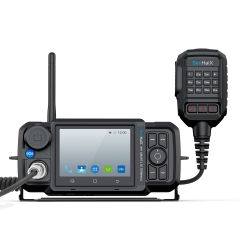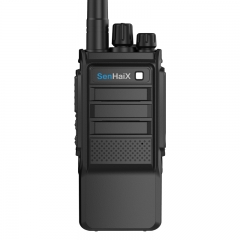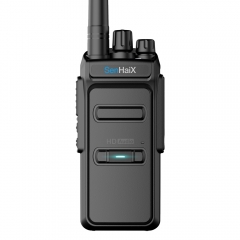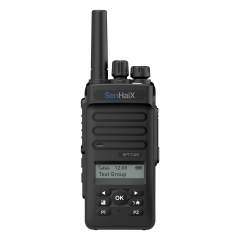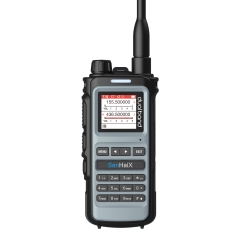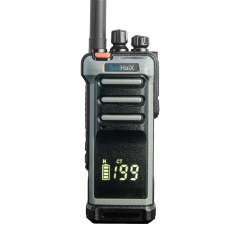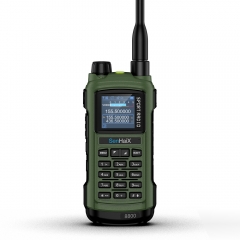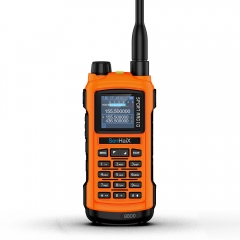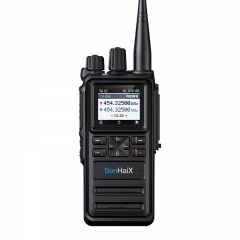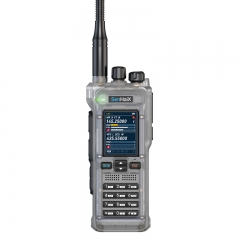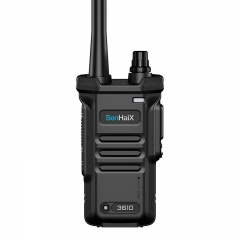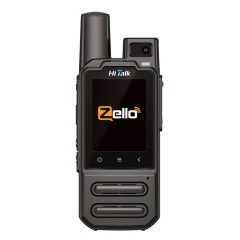"HAM" is the nickname of radio amateurs around the world, translated into Chinese is "ham", so people often call themselves HAM or ham. In 1992, China began to resume amateur radio activities. Until recent years, there have been more and more people with cars and car clubs, and a large number of amateur radio enthusiasts have developed rapidly.
Editor's Note: To engage in radio-related activities, please strictly abide by the relevant national laws and regulations.
1. Civilian walkie-talkie and professional walkie-talkie
The power of walkie-talkies exceeds 0.5W (99.99% on the market is over, except for some children's toy walkie-talkies, as shown below) are professional walkie-talkies. The walkie-talkies used in hotels and hotels/entertainment industries that are often seen as professional walkie-talkies.
Civil walkie-talkies can be used directly, but professional walkie-talkies need to test for a radio station operation certificate and apply for a radio station license, otherwise it is illegal. Later, we will introduce how to test the certificate and how to apply for a radio station license.
Hand-held walkie-talkies are referred to as hand stations, and the general power is about 5W-8W, and car walkie-talkies are referred to as car stations, and the power can reach about 100W.
The communication range of the walkie-talkie is strongly related to the height, the antenna and the power. In the urban area, if the floor is 5W high, the original short antenna of the mobile station can reach tens of kilometers, while the first floor may only be 2-3 kilometers. It is also because of the distance problem that there is a repeater.
Second, the amateur frequency bands of walkie-talkies (the UV band frequency range allowed by ordinary people after verification)
VHF section: frequency range 144.000-145.800MHz, UHF section: frequency range 430.000-435.000 and 438.000-440.000MHz. The U-segment has strong penetrating power and is suitable for use in cities. The V-segment spreads far and is suitable for mountainous and wild areas. The two-segment walkie-talkie that is often said refers to a walkie-talkie that contains two frequency bands: U-segment and V-segment. This article only discusses the UV-segment, shortwave Too professional, let's talk about it if there is a second serialization.
3. Intercom mechanism
1. Analog format: The walkie-talkie modulates voice, signaling, and signals on the carrier frequency of the walkie-talkie in a continuous wave mode, which is an analog signal method. The analog technology is mature and the cost is relatively low.
2. Digital system: Digital walkie-talkie is to digitally sample the voice signal, use a specific digital coding method and a specific baseband modulation form, and use a digital signal processor to optimize a data communication mode, similar to the current GSM mobile phone system.
Compared with traditional analog walkie-talkies, digital walkie-talkies have the advantages of strong anti-interference ability, good confidentiality, narrower channel bandwidth, and stronger data transmission capabilities. The current digital walkie-talkies with digital relays are not much different from the GSM telephone system. You can send SMS, send GPS information, relay roaming, all call, group call, single call, etc.
At present, analog walkie-talkies are more popular than digital walkie-talkies, mainly because the entry price of analog walkie-talkies is very low (benefiting from the rise of many small domestic manufacturers), and the cheapest is less than RMB100 yuan. And the lowest domestic price of digital walkie-talkies is also RMB7 -800 or so, the average price is around RMB2000.
Four, walkie-talkie brand
Domestic big brands such as Hytera, Linktone, Quansheng, Baofeng, Ouxun, etc. Imported brands such as Motorola (SMP is a sub-brand), ICOM, KENWOOD, YAESU (YAESU also Jokingly called Jesus) and so on.
5. What is a walkie-talkie repeater, classification and function?
In fact, a repeater is directly understood as a similar mobile base station, which is often built on the top of a tall building or on the top of a mountain. It is a device used to increase the communication distance of the walkie-talkies. When the distance between the two walkie-talkies exceeds the signal radiation range of the walkie-talkie, it will be closed. If there is no valid signal, at this time, it must be relayed through the walkie-talkie repeater. The role of the repeater is to forward the received signal to complete the relay between the signals. Two 5W walkie-talkies talk directly in the urban area, which is estimated to be 5-10 kilometers, but the relay station can cover the entire urban area and the entire province (for example, the Shandong Taishan relay can cover due to its unique location. The entire Shandong Province, and even the surrounding Hebei, Henan, and Jiangsu Provinces).
There are two types of relays: analog and digital relays, which are used for analog walkie-talkies and digital walkie-talkies. Among them, the digital relay system is divided into many types. The most common is Motorola's DMR system. At present, more than 80% of the domestic ones are Motorola DMR system, supported brands include Motorola and domestic Hytera. There are also C4FM/FDMA standards of Japanese manufacturers, such as Yaesu, Kenwood, ICOM, etc.
Analog relay knows the parameters such as downlink frequency/beat frequency/sub-tone and can be directly uploaded (including malicious interference, etc.), and all the hams that you are listening can hear what you say. However, digital relays need to apply for ID just like telephones. It can be logged into the walkie-talkie. It is also because of this difference that digital relays are better managed and anti-interference than analog relays. In addition to the all-known reasons, some first-tier cities such as Beijing, Shanghai, Guangzhou and Shenzhen no longer approve analog relays ( There are also many "learning and research analog relays"), which only open digital relays. Nowadays, there are more and more radio enthusiasts, and the number of relays is also increasing. Generally, there are areas above prefecture-level cities. And in many places Relays are all regional networking states: analog relays are connected to analog relays in neighboring areas through differential transfer, etc., to achieve the purpose of covering several areas; digital relays are connected to digital relays throughout the country through IP interconnection. The scene is: When driving home during the Spring Festival, you can save the relays of all provinces and cities along the road in the walkie-talkie, and then talk all the way back. PS: The hams everywhere are called enthusiastic, because our slogan is: The Hams in the world are families !
Local Hams will regularly organize station network call-in activities in the relay to increase everyone's daily communication. Local associations will also often hold emergency communication drills, which is very lively.
6. Radio operator license, radio license, call sign
Non-commissioned committees in various places regularly hold exams for operating certificates. The exams have question banks and simulated exam procedures (searched on the Internet, many), and can be passed with a little memorization. The exams are divided into categories A, B, and C. Category A is elementary, and you can pass the exam. Operate amateur UV radio stations; the B certificate is intermediate, and you can sign up half a year after the A certificate is passed, and you can operate shortwave after passing; the C certificate is mainly for high-power radio operation. Most people only burn the B certificate.
Pass the exam, get the operating certificate, and then bring your walkie-talkie (handset and car station) to the local radio station to apply for a radio license. One walkie-talkie applies for one. When applying for the walkie-talkie, specify the call sign at the same time (distributed in order, cannot be selected) So far, it is legal for you to press the launch button on the walkie-talkie.


















